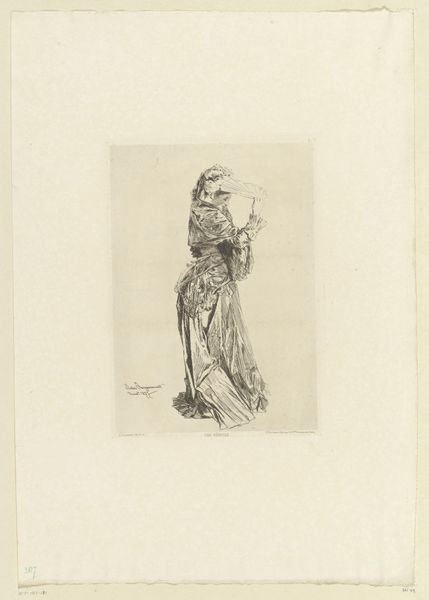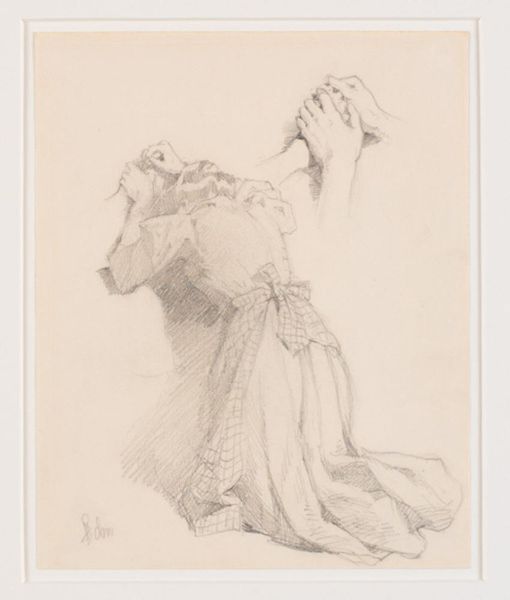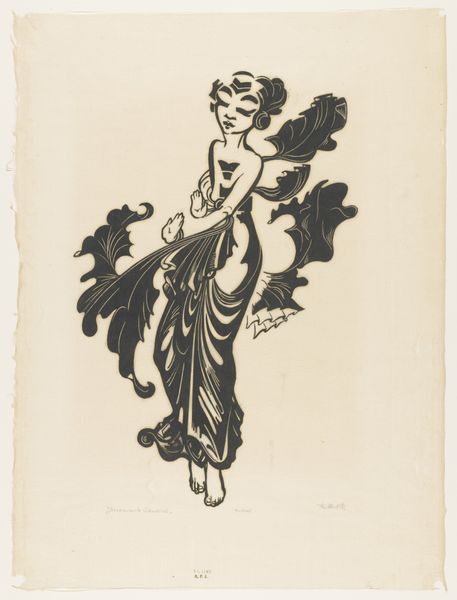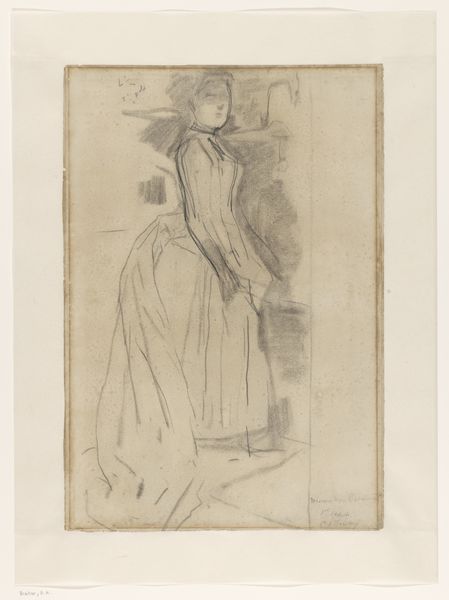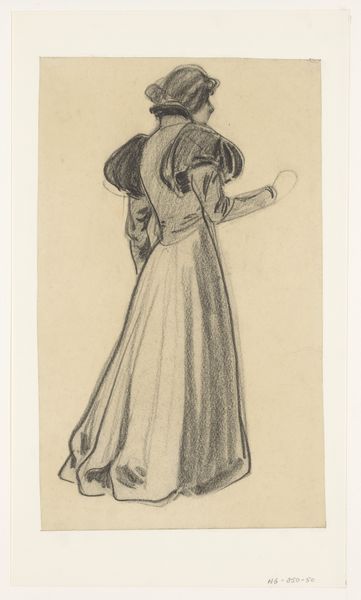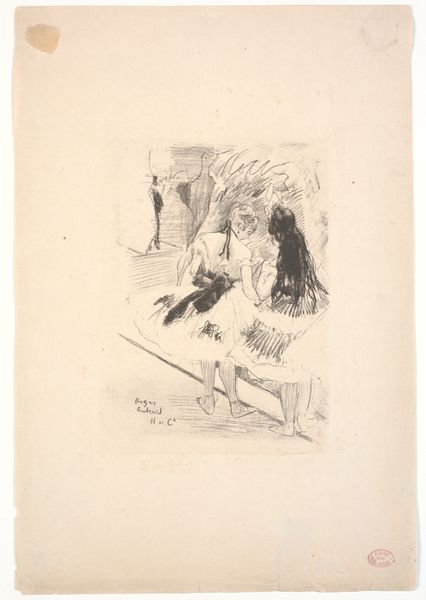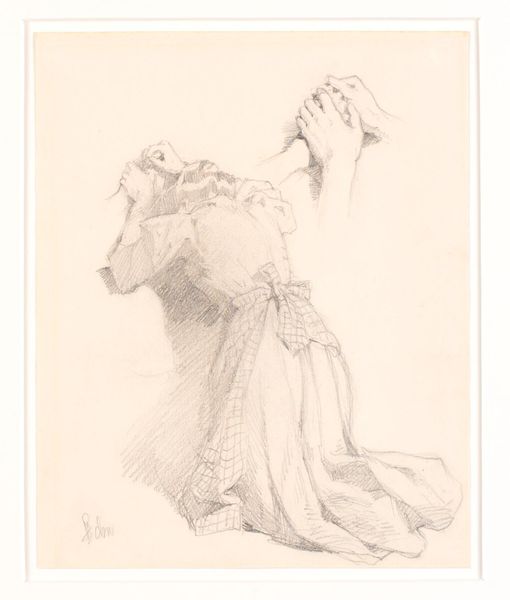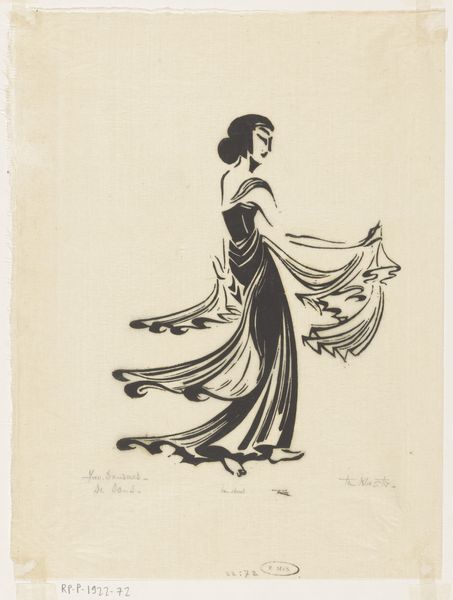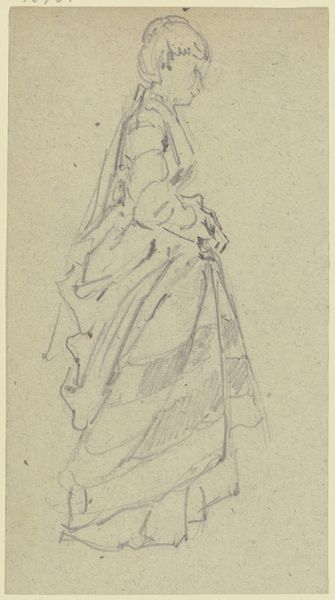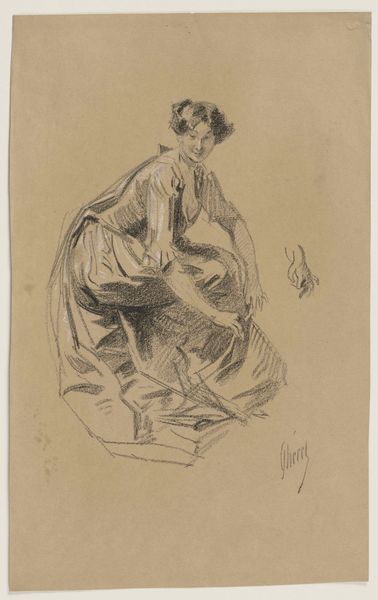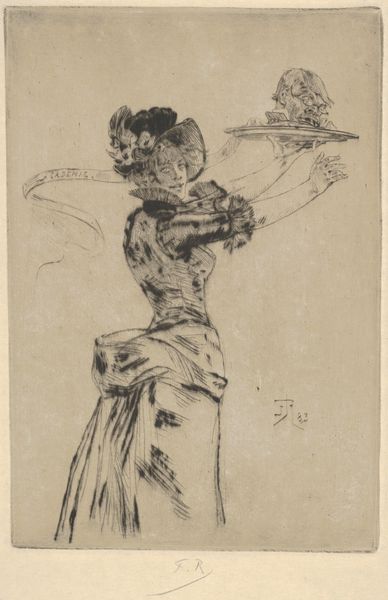
drawing, paper, pastel
#
portrait
#
drawing
#
impressionism
#
figuration
#
paper
#
pastel
Dimensions: height 282 mm, width 185 mm
Copyright: Rijks Museum: Open Domain
Curator: Welcome. Today, we're observing "Young Woman Reading in a Chair," a pastel and pencil drawing on paper, created by Jules Chéret between 1846 and 1932. Editor: It strikes me immediately as a captured moment of quiet contemplation. The use of pastel gives it this soft, dreamlike quality, doesn’t it? The woman is so absorbed in her book; it’s really inviting. Curator: Indeed. Chéret was deeply involved with depicting the female figure, and this piece, while seemingly informal, plays into contemporary visual culture's burgeoning focus on women's interiority. Think of the rise of novels featuring women characters at this time, their internal lives being explored and dissected. Editor: That's fascinating. You see, I'm immediately drawn to how her voluminous dress pools around her; it speaks to me of status but also potential constraint, you know? Reading offered women an escape, and in art, this scene represents agency. Curator: It certainly invites interpretation along those lines. Consider Chéret's work within the broader historical context. He's not just depicting a woman reading, he's contributing to the ongoing visual discourse surrounding women and their place in society, at a moment of dramatic socio-political shift in France. Editor: Precisely. The sketch-like quality, that almost off-handedness, reinforces that sense of intimacy. You get the feeling you're seeing something unguarded, a stolen moment. Yet it can be questioned whether a male gaze creates the limits of that space to begin with. Curator: I think what's also significant is Chéret's mastery of technique. The impressionistic style—the quick strokes, the emphasis on light—it creates this sense of immediacy, capturing not just a physical likeness but a fleeting emotional state. His legacy also stems from innovations in advertising; it is interesting to see those skills manifest here in a more personal representation. Editor: It reminds us that art is never created in a vacuum; that its role evolves and we respond differently as time goes by. We, today, see an image rife with narrative potential, both for her liberation and as yet another spectacle crafted through a patriarchal lens. It's a duality we continue to wrestle with. Curator: A very thoughtful perspective to end on. Hopefully our brief analysis has offered new perspectives. Editor: Yes, perhaps offering everyone some thought to chew on!
Comments
No comments
Be the first to comment and join the conversation on the ultimate creative platform.
